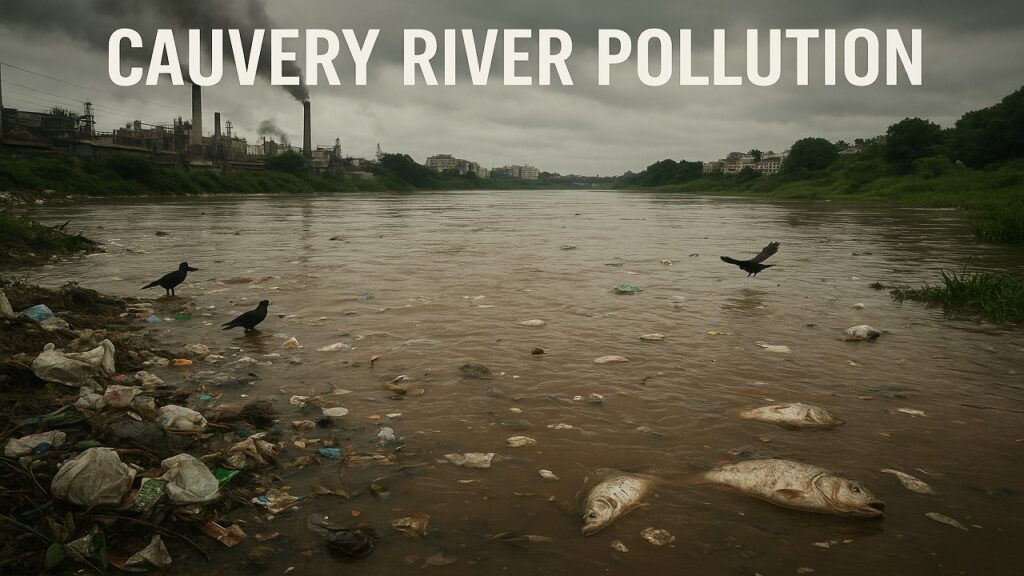Cauvery River Pollution: A Public Health Warning

- A recent study has revealed high levels of heavy metals in fish from the Cauvery River.
- The primary metals of concern are cadmium (Cd) and lead (Pb).
- Regular or excessive consumption of these contaminated fish may pose serious health risks, including carcinogenic (cancer-causing) and non-carcinogenic effects.
About the Cauvery River
Significance:
- The Cauvery (Kaveri) River is one of South India’s most sacred and vital rivers, often called the “Dakshina Ganga” (Ganges of the South).
Origin and Flow:
- Origin: Brahmagiri Hills, Western Ghats, Karnataka
- Length: Flows 765 km southeast through Karnataka and Tamil Nadu
- Tributaries: Kabini, Hemavati, Noyil, Amaravati, Bhavani
- Mouth: Drains into the Bay of Bengal near Cuddalore, forming the fertile Cauvery delta, also called the “Garden of Southern India”
Key Features:
- Major Dams: Krishnaraja Sagar, Mettur, Grand Anicut (2nd century AD)
- Supports irrigation, hydropower, and drinking water needs for millions
- Sacred sites like Srirangapatna and Srirangam lie along its course
Heavy Metals in the Cauvery River
What Are Heavy Metals?
- Heavy metals are naturally occurring metallic elements with high atomic weight and density.
- Some are essential in small amounts, but excessive accumulation in living organisms is toxic.
- Examples: Lead (Pb), Cadmium (Cd), Chromium (Cr), Mercury (Hg), Copper (Cu)
Metals Detected in the Study:
- Analyzed Metals: Chromium (Cr), Cadmium (Cd), Copper (Cu), Lead (Pb), Zinc (Zn)
- Primary Contaminants: Cadmium and lead, with levels exceeding safety thresholds in several fish species
Key Findings:
- Sources of Contamination:
- Industrial effluents from textile, electroplating, and chemical units
- Agricultural runoff containing pesticides and fertilizers
- Untreated urban sewage
- Variation: Metal concentrations varied across locations and fish species, indicating a mix of natural and human-induced sources
- Health Risks: Prolonged consumption of contaminated fish may lead to:
- Neurological disorders
- Kidney and liver damage
- Carcinogenic effects due to bioaccumulation of cadmium and lead
Conclusion
- The findings highlight the urgent need for monitoring and regulation of pollutants entering the Cauvery River.
- Protecting the river is essential for environmental sustainability and public health, as heavy metal contamination poses long-term health risks for communities dependent on its waters.
Source : The Hindu
